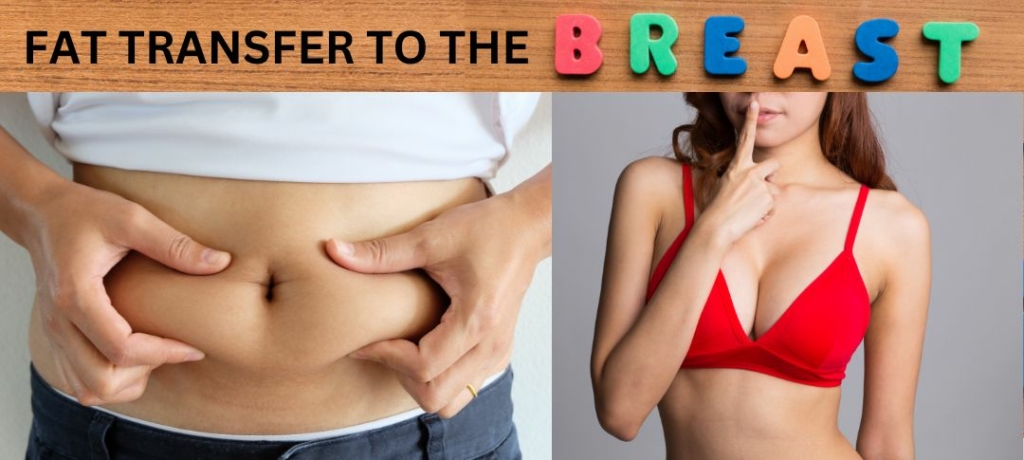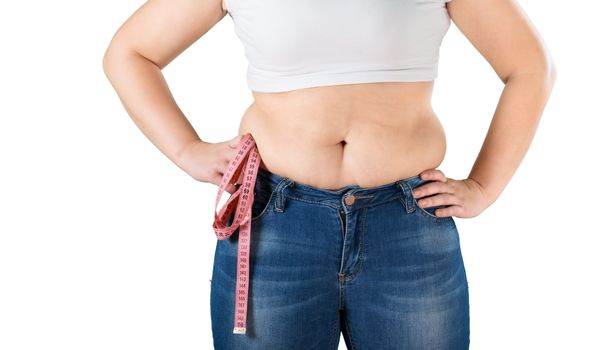
How Much Is a Breast Augmentation with Fat Transfer?
Breast augmentation with fat transfer is a becoming more popular as some patients prefer not to have implants. This type of breast augmentation delivers only a moderate increase in terms of breast size, however, the results are natural and there are no breast implants that could lead to unwanted side effects – like BIA-ALCL or BII.
If you are interested in getting a breast enlargement procedure, you probably want to know more about the cost of fat transfer to breast surgery in Australia.
What Is a Fat Transfer to the Breasts Surgery?
Fat on the stomachs, hips, and thighs, can be transferred to the breasts to increase the size of your boobs. The same technique can be used for fat transfer to your butt. The procedure essentially involves extracting fat with the help of liposuction, purifying and preparing fat for the transfer, and using it to increase the size of your breasts.
One of the major concerns for breast augmentation using implants is the fake look. Fat transfer on the other hand will help you achieve a more natural look while still inching closer to the desired cleavage.
Cost of Fat Transfer to Breast in Australia
The cost of fat transfer to breasts is significantly different from the cost of breast augmentation using implants. While Breast augmentation with implants ranges from $7.000 to $17.000 AUD, breast enlargement with fat is usually more expensive as it involves two different techniques and the need for more equipment.
As mentioned before, the fat transfer to the breasts entails the use of liposuction. Liposuction can be performed on one or multiple areas of the body. The plastic surgeon needs to make sure to collect enough fat to transfer to the breasts to create visible results. Keep in mind that not all the fat collected with liposuction survives the fat transfer. The cost of liposuction in Australia ranges from $5,000 to $20,000 depending on areas done and hours taken.
After liposuction is performed, the fat needs to be processed to get pure fat cells. The purification process entails the use of centrifugation, so special equipment is needed for this part of the intervention.
After the fat is purified, the plastic surgeon will use a special syringe to inject the fat cells into the breasts. The success of the procedure lays in the experience and technique of the plastic surgeon. Inserting too much fat in one area of the breast can lead to deformities, lumps and fat cells death.
The fat transfer to the breasts is a delicate and complex plastic surgery intervention. The Australian price range for fat transfer to the breasts surgery ranges from $10,000 to $25,000.
Are You a Good Candidate for a Fat Transfer to the Breasts?
To be eligible to undergo this procedure, you should have unwanted fat deposits in areas of the body such as the tummy, flanks, back or thighs. The plastic surgeon needs to collect enough fat for the transfer to the breasts, so the area to be treated with liposuction shouldn’t be very small (such as the chin, knees, etc.).
Aside from having adipose deposits that can be extracted with liposuction, a good patient for breast augmentation with fat transfer wants a minor to moderate increase in the size of the breasts. Achieving natural results and a moderate augmentation is the main goal of patients eligible to undergo this type of procedure. It is important to understand that the fat transfer to breasts surgery doesn’t deliver results comparable to getting breast implants.
When it comes to breast augmentation with implants, the size of the breasts post-op is dependent on the size of the implants used during the surgery. But with fat transfer, the breasts are increased by half a cup to a bra cup size after the intervention depending on fat survival rate.
Patients seeking this procedure should have realistic expectations for the surgery and good health and emotional condition.
What to Keep in Mind When Looking to Get a Fat Transfer to the Breasts?
An important aspect you should be aware of before resorting to a fat transfer to the breasts procedure is that the initial results can be very different from the final results that will become visible after the first three months post-op. Immediately after the fat is injected, the breasts are swollen and quite big, but, in the next couple of months the swelling decreases and some of the fat injected is reabsorbed by the body. This means that three months post-op your breasts might be smaller by 30% compared to how they looked in the first days after the procedure. This is a normal process and it is only the experience of the plastic surgeon and the patient’s commitment to following the recommendations that can guarantee a high survival rate for the fat cells transferred to the breasts.
What Makes Up the Total Cost of the Fat Transfer to the Breasts
Here are the elements that make up the total cost of fat transfer to breasts:
- Surgeon’s Fee
- Anaesthetist Fee
- Hospital Charges
- Theatre Fees
- Post-Op Garments
Surgeon’s Fee
The fee of the surgeon is based on their credentials, experience and expertise. The more experience the surgeon has, the more they will charge. Other elements like the popularity of the surgeon also come into play when it comes to determining the overall cost of the procedure. This will be the biggest chunk of your overall quote. A surgeon’s fee generally covers the cost of the surgery and the follow-up visits as well.
Hospital Charges
The hospital plays a huge role in how much the overall quote will be. Make sure that your surgeon selects an accredited facility that is equipped to handle all sorts of complications. Never choose someone who suggests performing the procedure in the backroom clinic. The location of the hospital also plays a major role in the overall cost of the surgery. This portion of the cost covers the fee of the staff, overnight stays if needed, and other facilities that will be required in the process.
Theatre Fees
These fees are also charged on an hourly basis. This part of the fee is pretty standard. The cost will be multiplied by the number of hours. The longer the procedure takes, the higher the cost will be and vice versa. Sometimes, these charges fall under the hospital charges bracket.
Post-Op Garments
Swelling is bound to happen after any kind of surgery especially when you are getting a combination of liposuction and fat transfer. Your surgeon will recommend wearing compression garments for quite some time post surgery. It will speed up the healing process and minimise swelling. This is a small cost that may or may not be included in your overall quote.
You should always ask for a detailed cost breakdown during the consultation. Always inquire about the hidden charges and ensure what is and isn’t part of the overall quote. You don’t want to be surprised by any unexpected charges at the end of the surgery.
Other Costs that are Often Not Included in the Surgical Quote
There are certain additional charges that are independent of the overall quote. Some of them include but aren’t limited to:
· Initial Consultation
This one is quite obvious. When you visit the surgeon very the first time, you will have to pay for the consultation. If you decide to visit more than one surgeon, you will have to pay for the cost every single time.
· Lab Tests
The surgeon will ask you to take a couple of medical tests to ensure you are the right candidate for the procedure and that it is completely safe for you. This cost will differ for every single person based on their medical history.
· Supportive Garments
This is sometimes included in the overall quote and sometimes isn’t. While supportive garments won’t cost you an arm and a leg, it is good to be mindful of them.
· Multiple Procedures
If the surgery doesn’t go as per your plan, you might need another procedure. This will definitely amp up the amount you were expecting to spend the first time around.
Please be vary that not all quotes are transparent and not all surgeons will cover all the elements mentioned above. Hence, during the initial consultation, clarify everything in terms of cost, elements that will be covered, and any hidden charges. You never want to be bombarded with extra costs in the end.
Medicare/Private Health Insurance and Fat Transfer to Breast Surgery
Breast Augmentation using fat transfer is typically regarded as a purely cosmetic surgery procedure. However, some breast surgeries will get coverage from Medicare and Private Health Fund if you are dealing with congenital defects such as tuberous breasts, asymmetry or reconstruction.
During the consultation, you can discuss this aspect with your surgeon to ensure you are getting coverage by Medicare/Private Health Fund or not.
Each private health fund policy varies. So, make sure to call your health insurance provider and learn about the coverage they can offer for your surgery. Whatever isn’t covered by the Private Health Fund will become out-of-pocket costs for you.
Will your Superfund Pay for Fat Transfer to Breasts Surgery?
If you are able to qualify for an Item Number, some patients are able to access their accumulated Superannuation Funds to pay for their own life-changing surgery.
Bear in mind that there is an ATO government process to follow, forms to fill in and your SuperFund to contact. There is no guarantee that your SuperFund will approve the release of funds.
You can make applications for early release of super for surgery through the ATO via your ‘MyGov‘ account.
Further Reading Related to Fat Transfer to Breasts
- Breast Augmentation Sydney – Breast Implants by Dr Bish Soliman
- Fat Transfer to Breast Before and After Photos by Dr Carmen Munteanu
- Breast Reshaping with Fat Grafting Gallery by Dr. Guy Watts
- Fat Transfer to Breasts Sydney by Dr Michael Kernohan
- Fat Transfer To Breasts / Lipofilling – Anca Breahna




